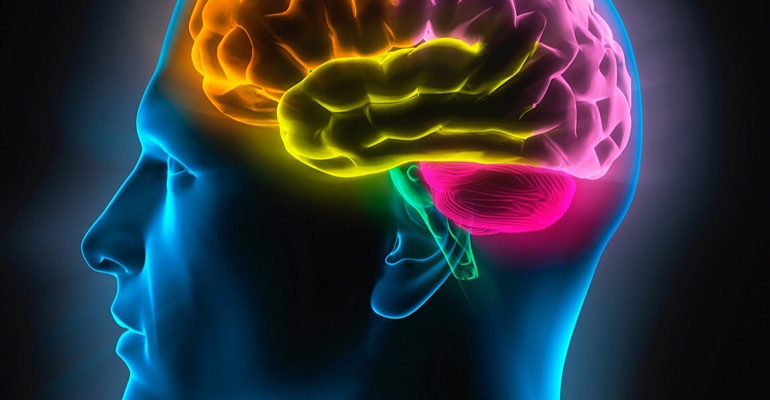The study results linked repeated head impacts with tiny, structural changes in the brains of contact-sport athletes who had not been diagnosed with a concussion.
June 5, 2023

Researchers are applying artificial intelligence to MRIs to view difficult to spot brain damage in student-athletes. The study was published in the May 22 in The Neuroradiology Journal and was led by researchers in the Department of Radiology at NYU Grossman School of Medicine.
Findings from the study show that the AI tool could accurately distinguish between the brains of male athletes who played contact sports like football vs. noncontact sports like track and field. The results linked repeated head impacts with tiny, structural changes in the brains of contact-sport athletes who had not been diagnosed with a concussion.
The study looked at hundreds of brain images from 36 contact-sport college athletes (mostly football players) and 45 noncontact-sport college athletes (mostly runners and baseball players). The work was meant to clearly link changes detected by the AI tool in the brain scans of football players to head impacts. It builds on a previous study that had identified brain-structure differences in football players, comparing those with and without concussions to athletes who competed in noncontact sports.
Yvonne Lui, MD, the study senior author and professor and vice chair for research in the Department of Radiology at NYU Langone Health said researchers used a machine learning classifier to identify individuals with and without exposure to repetitive head impacts.
“The tool is trained on a small number of subjects but shows comparable performance on a held-out test set of subjects which indicates generalizability,” Lui, who is also the lead study author, told MD+DI. “In fact, the fact that our tool performs well with only a small training set reinforces the idea that the finding is generalizable. We used some approaches that can be useful when applying machine learning to small datasets such as are often encountered in medical imaging. Namely, simple linear classifiers and studying diffusion MRI metrics of interest based on prior research in concussion.”
Lui said there were some surprising findings to come out of the research.
“We found that microstructural complexity (how complex the structural organization of the brain tissue is - fluid or anything homogeneous has low complexity, something with lots of different components and complicated structure at a microscopic level has high complexity) is important in identifying exposure to repeated head impacts,” Lui said. “Tissue complexity as well as possibly extracellular compartment characteristics (these would reflect alterations of the extra-axonal space as opposed to neurons themselves; so supportive structures and tissues to the neurons/inflammatory cells and proteins/swelling around the cells/myelin are all things around).”
Liu said there are still some questions that need to be answered surrounding the findings.
“I don’t know if these findings are representative of injury in persons exposed to repeated head impacts or some kind of reactive or compensatory process. I personally think about it akin to a rower’s hands. If you feel an athlete's hands, you can tell the difference between a distance runner and a competitive rower. The callouses you feel are protective, they are healing, they perhaps indicate some initial injury or initial condition, they decrease over time if rowing is stopped. Similarly, we don’t know right now if these brain tissue microstructure features represent injury per se or may be reactive. We also are learning about how they may evolve over time.”
About the Author(s)
You May Also Like




